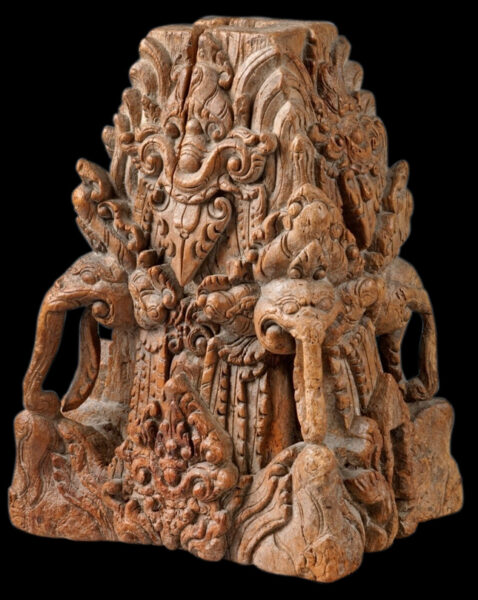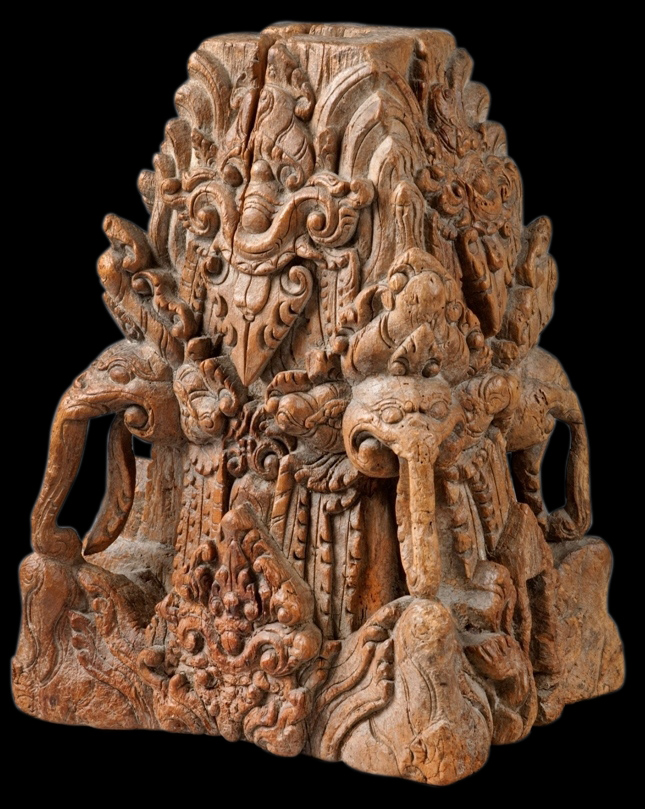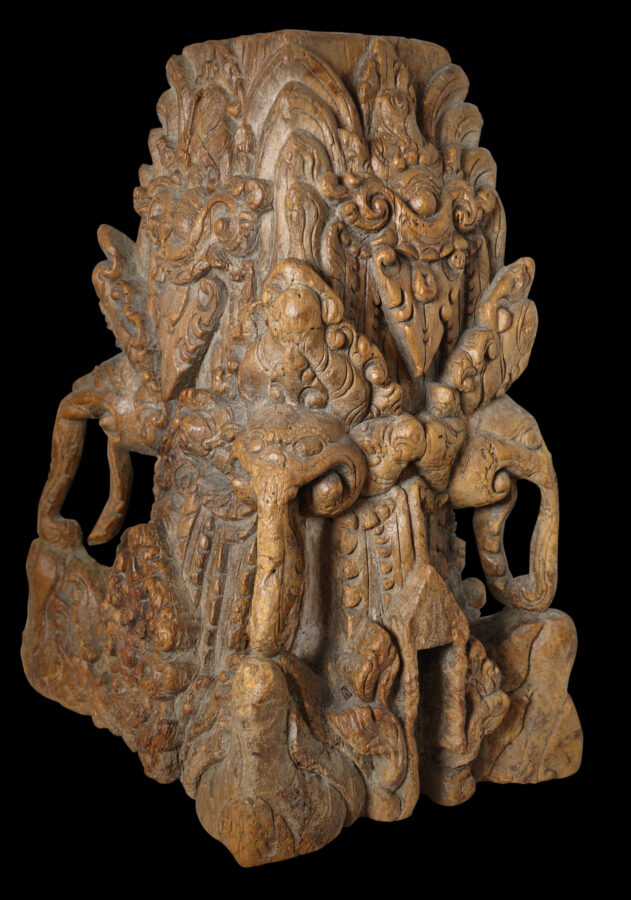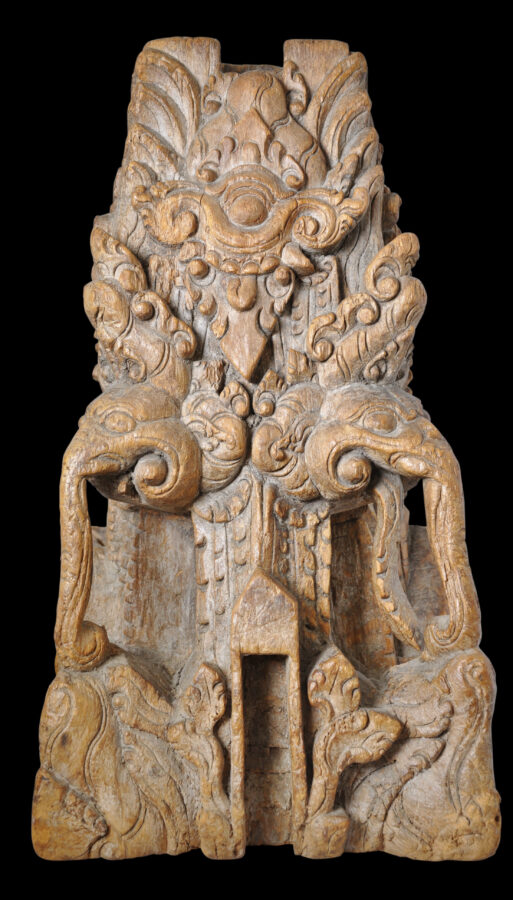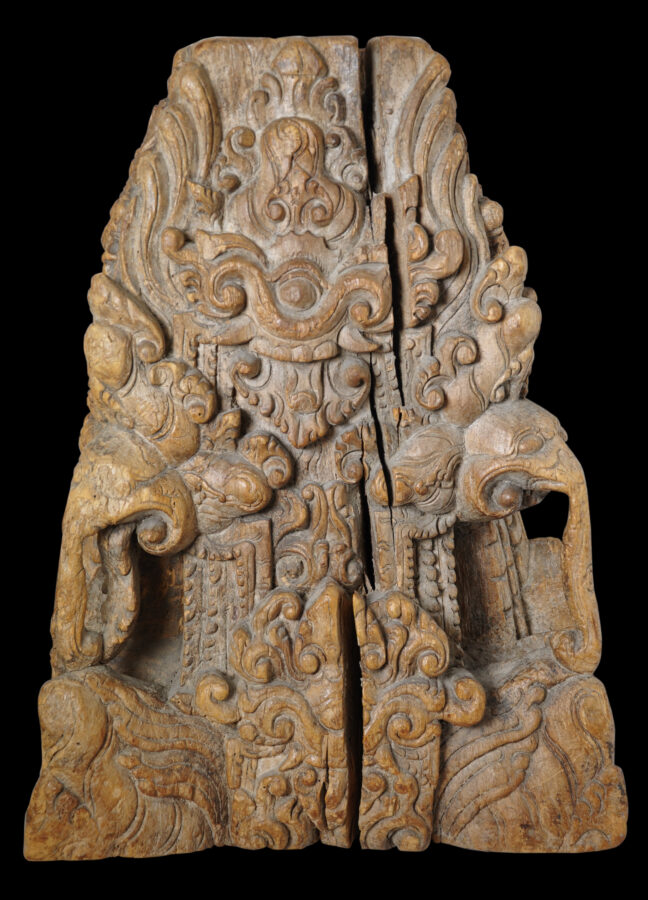This superbly carved wooden block would have served as a pillar base in an open-walled pavilion most probably in a temple compound on the Hindu island of Bali in Indonesia. Of immense sculptural beauty, it has a square, tapering form. Going up, it has been carved with three registers, each of which has a protective function. The manner and order of the carving appears to follow the correct form for a pillar base (sendi tugeh) according to Balinese precepts of the cosmic order.
The lowest is carved with karang batu – the rock motif. The next level is carved with openwork detailing on the four corners in the form of elephant heads with trunks and lolling tongues (karang asti). The top level or register is carved with karang bintulu – the single eye motif.
See Ramseyer (1977, fig. 101) for a related sendi tugeh with similar karang motifs.
The example here has a superb patina consistent with considerable antiquity. There are the expected age-related losses and shrinkage cracks but overall, piece is highly sculptural and stable.
References
Maxwell, R. et al, Bali: Island of the Gods, National Gallery of Australia, 2014.
Ramseyer, U., The Art and Culture of Bali, Oxford University Press, 1977.


